Tick allergy
This page includes information about how to safely remove a tick and also how to prevent tick bites.
It is important that ticks are removed properly and are not moved or touched. Disturbing a tick may cause more tick saliva to be injected into the body by the tick.
Allergic conditions linked with tick bites include:
- Mammalian meat allergy
- Less commonly mammalian milks and mammalian products allergy, and
- Tick anaphylaxis
Watch our short animation or read the information below about how to safely remove a tick.
How to safely remove a tick
How to safely remove a tick - infographic
![]() How to Safely Remove a Tick Infographic425.58 KB
How to Safely Remove a Tick Infographic425.58 KB
Freeze it, don’t squeeze it!
Ether containing sprays* freeze and kill the tick.
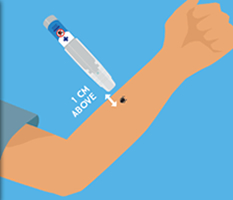 |
1 |
Take the ether containing spray and place it about 1 cm above the tick. |
|
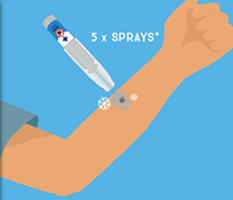 |
2 |
Using the ether containing spray, spray the tick 5 times |
|
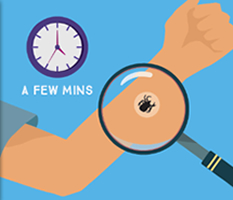 |
3 |
After a few minutes, if you have a magnifying glass check if the tick is still moving its legs. If the tick has stopped moving, it is dead. |
|
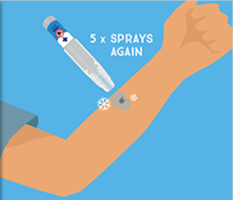 |
4 |
If you do not have a magnifying glass or if the tick is not dead, spray the tick 5 more times. |
|
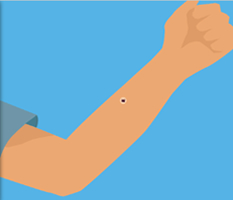 |
4a |
The dead tick should drop off. |
|
 |
4b |
|
|
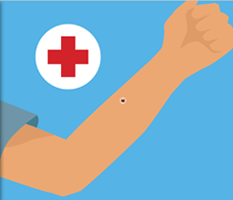 |
5 |
If the tick does not drop off, have it safely removed by a health professional using fine-tipped forceps. |
|
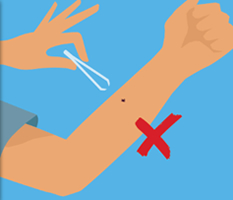 |
! |
Do not use household tweezers to remove the tick, as this will cause it to squeeze tick saliva into your body, even if the tick is dead. |
If you do not an have ether containing spray – seek medical help to remove the tick.
Ether containing sprays can be purchased over the counter from your local pharmacy.
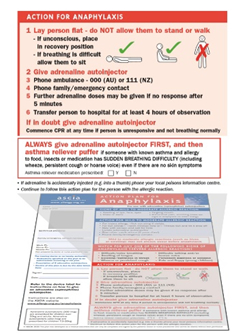 If you have a tick allergy, follow the instructions on your ASCIA Action Plan.
If you have a tick allergy, follow the instructions on your ASCIA Action Plan.
* Medi Freeze Tick Off or Wart-Off Freeze are types of ether containing sprays.
How to prevent tick bites
Watch our short animation or read the information below about how to prevent tick bites.
How to prevent tick bites - infographic
Removing ticks correctly to avoid allergies and other serious diseases can be tricky, so it is best to try and avoid tick bites and be prepared by doing the following:
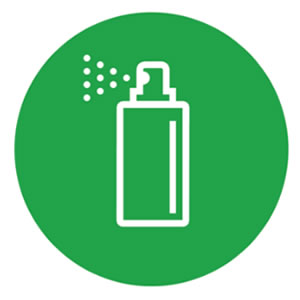 |
|
Apply repellent containing DEET such as RID, Bushman, Aerogard or repellent containing Picaridin such as OFF. Follow directions for when to reapply to maintain protection and check the label to see if the repellent can be used on young children and use according to manufacturer's instructions. |
|
 |
|
Tuck your shirt into your pants and tuck your pants into your socks. |
|
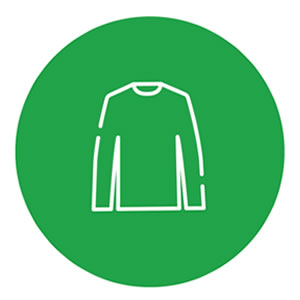 |
|
Wear permethrin-treated clothing to prevent tick bites. |
|
 |
|
When gardening, wear long sleeves, long pants and gloves. |
|
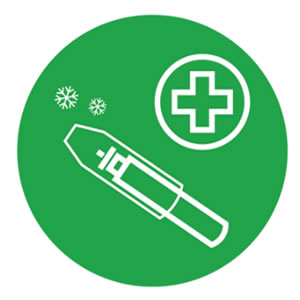 |
|
Have a tick freezing spray in your first aid kit. |
|
 |
|
Treat your backyard with an APVMA approved insecticide if you live in an area where there are ticks. You may wish to employ a pest manager to undertake this. |
If you do have a tick bite, it is important that ticks are not forcibly removed or touched.
Ether containing sprays can be purchased over the counter from your local pharmacy.
 If you have a tick allergy, follow the instructions on your ASCIA Action Plan.
If you have a tick allergy, follow the instructions on your ASCIA Action Plan.
If you think you are having a severe allergic reaction to a tick bite, lay down or sit with legs outstretched if breathing is difficult and call triple zero (000) for urgent medical care.
Content updated March 2022